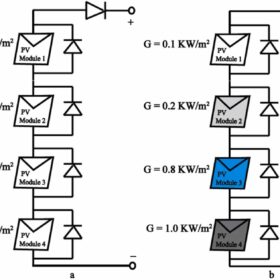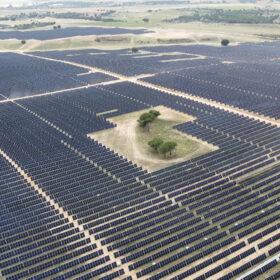Novel MPPT technique based on Coronavirus algorithm
The proposed algorithm is intended for harvesting the maximal power in PV systems operating in varying weather scenarios. According to its creators, the new approach can be applied on a low-cost microcontroller.
The Hydrogen Stream: Ceres secures license agreement for SOEC stack production
As electrolysis is gaining traction in the markets, European and US companies announce new hydrogen projects in the heavy mobility sector. Meanwhile, UK-based solid oxide electrolysis cell (SOEC) tech developer Ceres Power signed a global long-term agreement with Delta Electronics.
The Hydrogen Stream: Plug Power commissions 1 MW PEM electrolyzer
A number of hydrogen projects are moving forward in the United States, Germany and Denmark. In other developments, the German state of Saxony is teaming up with other partners, including the Czech Republic, to set up a hydrogen network in Eastern Europe.
Greenvolt secures 1.2 GW in Polish auction
Greenvolt Power, a Portuguese independent power producer, says it was awarded 1.2 GW of capacity for six battery energy storage systems (BESS) in a recent renewable energy auction in Poland, claiming it was the “top winner.”
Corab debuts residential brine-water heat pump
Polish manufacturer Corab has developed a new ground-source heat pump with several components supplied by Denmark’s Danfoss. It offers 8 kW to 16 kW of rated thermal power.
PPAs offer protection
Europe is witnessing a surge in power purchase agreements (PPAs). Over the past four years, the number of European PPA transactions has trebled. More than 180 deals were signed in 2022 alone and the trend is expected to continue, especially for solar projects.
Poland allocates 494 MW of solar in 2023 auctions
Poland’s Energy Regulatory Office has awarded 494 MW of solar in largely unsubscribed auctions this year. It allocated 123 MW for installations smaller than 1 MW with the lowest bid of PLN 284.95 ($71.28)/MWh, and 471 MW for projects larger than 1 MW with the lowest bid of PLN 272.91/MWh.
Casting the net for solar recruits
Solar-industry companies need to forget ideas about office-based roles and look far afield to source the recruits necessary for the energy transition – and then they need to keep them loyal by offering a rewarding career.
Poland’s grid-connected PV project pipeline hits 18 GW
Statistics from Instytut Energetyki Odnawialnej show that the Polish solar market could see significant growth due to a rise in grid-connection approvals, despite an increase in project rejections.
New model to identify land eligibility, calculate LCOE for utility-scale PV
Created by scientists in Poland, the model is based on GIS and can be adapted to different market conditions. The researchers applied it to the Polish market and found that 3.61% of the country’s available land can host utility-scale PV systems.










